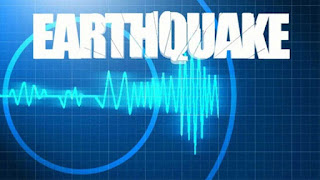Earthquakes,
Tsunamis, Landslides, Floods and Fires are natural calamities causing severe
damage and sufferings to persons by collapsing the structures, cutting off
transport systems, killing or trapping persons, animals etc. Such natural
disasters are challenges to the progress of development.
However, civil engineers as designers have a major role to play in minimizing the damages by proper designing the structures or taking other useful decisions.
Because of the vastness of the topic, “Disaster management and mitigation”, this article includes understanding the earthquakes, behavior of the materials of construction and structures and the extent to which structural engineers make use of the knowledge in taking proper decisions in designing the structures made of reinforced concrete.
However, civil engineers as designers have a major role to play in minimizing the damages by proper designing the structures or taking other useful decisions.
Because of the vastness of the topic, “Disaster management and mitigation”, this article includes understanding the earthquakes, behavior of the materials of construction and structures and the extent to which structural engineers make use of the knowledge in taking proper decisions in designing the structures made of reinforced concrete.
Earthquakes
have many other effects besides vibrating the structures in response to ground
shaking at its foundation. These other effects may even exceed that due to
vibration.
Unfortunately, the procedure of their estimation and the required steps for the design are considered outside the scope of structural engineering. Different seismic resistant design codes have provisions to take into account the vibration of structures.
Unfortunately, the procedure of their estimation and the required steps for the design are considered outside the scope of structural engineering. Different seismic resistant design codes have provisions to take into account the vibration of structures.
Terminology for Earthquake Engineering
(a) Epicenter of an earthquake
Epicenter
is the geographical point on the surface of earth vertically above the focus of
the earthquake. (cl.3.10 of IS 1893 (Part 1): 2002).
(b) Focus of earthquake
Focus
is the source of the elastic waves of the originating earthquake inside the
earth which cause shaking of ground (cl. 3.13 of IS 1893 (Part 1): 2002).
(c) Intensity of earthquake
The
intensity of an earthquake indicates the strength of shaking during the
earthquake and is expressed by a number according to the modified Mercalli
Scale or M.S.K Scale of seismic intensities (cl. 3.15 of IS 1893 (Part 1):2002).
(d) Magnitude of earthquake (Richter’s Magnitude)
The
magnitude of an earthquake is expressed by a number, which is a measure of the
energy released in an earthquake. The magnitude of an earthquake is defined as
logarithm to the base 10 of the maximum trace amplitude, expressed in micron,
which the standard short-period torsion
seismometer
(with a period of 0.8 second, magnification of 2800 and damping nearly
critical) would register due to the earthquake at an epicentral distance of 100
km (cl. 3.18 of IS 1893 (Part 1): 2002).
(e) Critical damping
Critical
damping is the damping beyond which the free vibration motion will not be
oscillatory (cl. 3.3 of IS 1893 (Part 1): 2002).
(f) Maximum Considered Earthquake (MCE)
Maximum Considered Earthquake is the most
severe earthquake whose effects are considered by IS 1893 (Part 1): 2002, as
given in cl. 3.19 of this standard.
(g) Liquefaction
Liquefaction
is a state in saturated cohesionless soil wherein the effective shear strength
is reduced to negligible value for all engineering purposes due to pore
pressure caused by vibrations during an earthquake when they approach the total
confining pressure. In this condition the soil tends to behave like a fluid
mass (cl. 3.16 of IS 1893 (Part 1): 2002).
Bureau of Indian Standards for Earthquake Design
In
our country, several major earthquakes have occurred in the
Himalayan-Nagalushai region, Indo-Gangetic Plain, Western India, Kutch and
Kathiawar regions. Taking into account seismic data from studies of these
Indian earthquakes, Bureau of Indian Standard first published IS 1893
“Recommendations for earthquake resistant design of structures” in 1962 and
revised in 1966. Considering the local seismology, accepted level of seismic
risk, building topologies and materials and methods used in construction,
presently the Bureau of Indian Standards has the following seismic codes:
Indian Standard Codes for Earthquake Design
1. IS 1893 (Part 1), 2002; Indian Standard Criteria for
Earthquake Resistant Design of Structures (5th Revision),
2. IS
1893 has other four parts:
(a)
Part 2 for liquid retaining tanks–elevated and ground supported,
(b)
Part 3 for bridges and retaining walls,
(c)
Part 4 for industrial structures including stack like structures and
(d)
Part 5 for dams and embankments.
However,
they are yet to be finalized. Hence, provisions of Part 1 will be read along with relevant
clauses of IS 1893: 1984 for structures
other than buildings.
3. IS4326: 1993, Indian Standard Code of Practice for Earthquake Resistant Design
and Construction of Buildings, (2nd Revision),
4. IS
13827: 1993, Indian Standard Guidelines for Improving Earthquake Resistance of
Earthen Buildings,
5. IS
13828: 1993, Indian Standard Guidelines for Improving Earthquake Resistance of
Low Strength Masonary Buildings,
6. IS13920: 1993, Indian Standard Code of Practice for Ductile Detailing of
Reinforced Concrete Structures Subjected to Seismic Forces, and
7. IS
13935: 1993, Indian Standard Guidelines for Repair and Seismic Strengthening of
Buildings.
To download more civil engineering codes go to this link
The
regulations of these standards will not result in structures having no damage
during earthquake of all magnitudes. However, the regulations shall ensure
that, as far as possible, structures will be able to respond without structural
damage to shocks of moderate intensities and without total collapse to shocks
of heavy intensities.





![[PDF] SP 16 :1980 Design Aids For Reinforced Concrete to IS : 456-1978](https://blogger.googleusercontent.com/img/b/R29vZ2xl/AVvXsEj3vWyWR9sVpY2Mcip5F3ttq_4jje6Et0mqiBug-q8n7kClvXle3KD0XtZBwYBtmYFfIekvQYIW9gFB5aqcri6KrHD4x2PalOyEWAXPkLNFfbXe8m9m8WvCLSEWok7vPivvYidB1tj8JjeX/w100/is-sp-16-1980.JPG)

![[PDF] Download IS 800 Code | Indian Standard Code for Steel](https://blogger.googleusercontent.com/img/b/R29vZ2xl/AVvXsEjMmVdQd3q6sKYLbOG23DVJg2U_8IrdWJSfCcyA7gKs5NKVFBsi6dFPhGxoVctqzOHEIvJ6pqvQ6mpFMd5vV0U5IQHo-FETwRXTjbZ-Dok9CHxUJgePxHyFTHa2pNiWyW4mkYCJWOv_2IcP/w100/is-800-2007.JPG)
![[PDF] IS 456 2000 | Download Civil Engineering Code](https://blogger.googleusercontent.com/img/b/R29vZ2xl/AVvXsEjl8mzhZI_smGwhJPipCx2TuxHldgAvnHrYfkud8mDJ1kF4Syd83-TNKsXjyY1BVxFrxZ1tt-fErpupgiF146wqOfPtGo8M9GWrnQX9b9TyA-YtjlNWnlwdk9LaMN_JJN8AGCU619UI6Uu_/w100/is-456-2000.JPG)
0 Comments